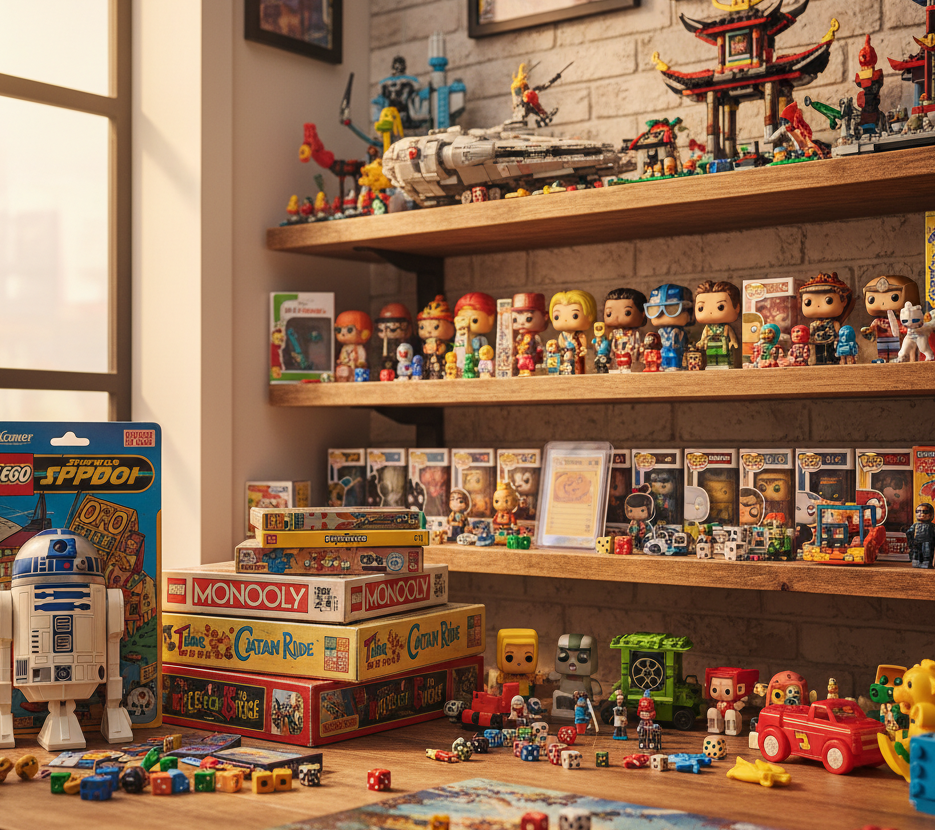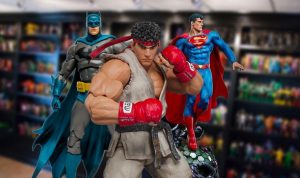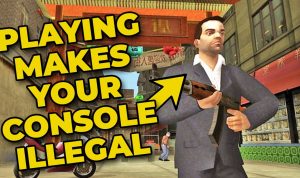The toy and game industry is a multi-billion dollar behemoth, driven by nostalgia, innovation, and the timeless desire for fun. Whether you’re a hobbyist looking to declutter, a dedicated collector seeking to monetize your passion, or an entrepreneur aiming to build a thriving business, entering the world of selling toys and games is an exciting venture. From vintage action figures to modern board games, the market is vast and full of opportunity. But success doesn’t happen by chance. It requires a strategic approach, a keen eye for value, and a deep understanding of your audience. This comprehensive guide will walk you through the essential steps to not only sell toys and games but to build a profitable and sustainable business.
Understanding Your Market: What Sells and Why
Before you list your first item, you need to understand the market landscape. The toy and game industry isn’t a monolith; it’s a collection of diverse niches, each with its own set of rules and a dedicated community of enthusiasts.
New vs. Used: New, in-box toys and games often command premium prices, especially if they are limited editions or from popular franchises. However, the used market is where a significant portion of the action happens. Vintage toys from the 80s and 90s, for example, can be incredibly valuable due to their scarcity and nostalgic appeal. Condition is king. A “used” item that is in excellent, near-mint condition will fetch a much higher price than one that is heavily played with or damaged.
Collectibles vs. Playthings: Not all toys are created equal. Some are designed primarily as collectibles, like Funko Pops or highly detailed action figures, while others are intended for active play, like LEGO sets or NERF blasters. Collectibles often have a more stable and predictable value, while playthings can fluctuate more based on trends and availability.
Niche is Nice: Don’t try to be a one-stop-shop for everything. Instead, focus on a specific niche. Are you an expert in vintage Star Wars figures? Do you know everything about rare board games? Or are you passionate about Japanese trading card games like Pokémon and Yu-Gi-Oh!? Specializing allows you to build a reputation as an expert, attract a dedicated customer base, and more effectively source high-value items.
Sourcing Your Inventory: Finding Your Gold
Once you know what you want to sell, the next step is finding it. Sourcing is the lifeblood of your business. The more creative you are, the more opportunities you’ll find.
Your Own Collection: The easiest place to start is with your own toys and games. Decluttering can not only free up space but also uncover hidden gems that could be worth a significant amount of money. Take a critical look at your shelves—you might be sitting on a goldmine.
Thrift Stores and Garage Sales: These are the traditional treasure hunting grounds for resellers. You’ll need patience and a good eye, but the potential for finding highly profitable items at a low cost is immense. Always research potential finds on your phone while you’re there to get a quick estimate of their market value.
Online Marketplaces: Sites like eBay, Facebook Marketplace, and specialized forums are excellent for both buying and selling. You can find “lot” listings where people sell large collections at a discount, or you can search for undervalued items that you can clean up and resell for a profit.
Wholesale and Closeout Deals: If you’re serious about building a business, consider buying wholesale from distributors or looking for closeout sales from major retailers. This requires a larger initial investment but allows you to acquire new, in-demand products at a lower per-unit cost.
Pricing Your Products: The Art of Valuation
Pricing is a delicate balance. Price too high, and your items will sit unsold. Price too low, and you’ll leave money on the table.
Do Your Research: The single most important rule of pricing is to research completed listings. Don’t just look at what people are asking for an item; look at what it actually sold for. Websites like eBay show “Sold” and “Completed” listings, which provide a realistic view of the market value.
Consider Condition: An item’s condition is the single biggest factor in its value. Be honest and critical. Is the box damaged? Are all the pieces included? Is there wear and tear? Adjust your price accordingly.
Account for Costs: Remember to factor in your costs: the price you paid for the item, shipping materials, and platform fees (e.g., eBay’s final value fees). Your profit is what’s left after all these expenses are covered.
Listing for Success: Writing Descriptions That Sell
A great product deserves a great listing. The quality of your listing can make the difference between a quick sale and an item that languishes in your inventory.
High-Quality Photos: This is non-negotiable. Take multiple, well-lit photos from different angles. Show the front, back, and sides of the box. If it’s a used item, be sure to photograph any imperfections or damage. A single, blurry photo is a major red flag for buyers.
Detailed and Honest Descriptions: Your description should be a comprehensive breakdown of the item. Include all relevant information:
- Title: Use keywords that buyers are searching for (e.g., “Vintage 1980s He-Man Action Figure Mattel Masters of the Universe”).
- Condition: Be upfront and honest about the condition of the item. Use a standardized grading scale (e.g., “Mint in Box,” “Excellent Condition,” “Play Worn”).
- Completeness: State clearly if the item is 100% complete with all accessories, or if any pieces are missing.
- Features: Highlight any special features or details that make the item unique.
Shipping and Handling: Be transparent about your shipping costs and policies. Offer various shipping options, and make sure to package your items securely to prevent damage in transit.
The Power of Community and Customer Service
In the world of collectibles and fandoms, community is everything. Building a reputation as a trustworthy and knowledgeable seller is a major asset.
Engage with Buyers: Respond to questions promptly and professionally. Being helpful and courteous builds trust and can lead to repeat business.
Provide Excellent Customer Service: If a buyer has a problem with an order, address it quickly and fairly. A positive resolution to a negative situation can turn a frustrated buyer into a loyal customer. Positive reviews and feedback are your best marketing tools.
Join the Conversation: Participate in online forums, social media groups, and local events related to your niche. Share your knowledge, show off your finds, and become a recognized face in the community. This not only helps you source new items but also brings you qualified leads.
Looking to the Future: Scaling Your Operation
Once you’ve mastered the basics, you can start to scale your operation.
Diversify Your Platforms: While eBay is a great starting point, consider selling on specialized platforms like Mercari, Etsy (for vintage items), or even building your own e-commerce website. This reduces your reliance on a single platform and can help you reach new customers.
Invest in Better Tools: As your sales grow, invest in better tools like a label printer, high-quality packing materials, and inventory management software. These small investments can save you a lot of time and effort in the long run.
Build Your Brand: Create a memorable brand identity, from your business name to your packaging. A professional and consistent brand makes you look more credible and can help you stand out in a crowded market.
Selling toys and games is more than just a transaction; it’s a passion project for many. By understanding your market, meticulously sourcing and pricing your inventory, creating compelling listings, and building a reputation for excellent customer service, you can turn your hobby into a successful and fulfilling business. The joy of a sale is only matched by the satisfaction of helping someone find a piece of their childhood, a rare collectible, or a new game to create memories with.







